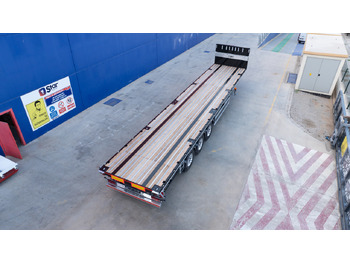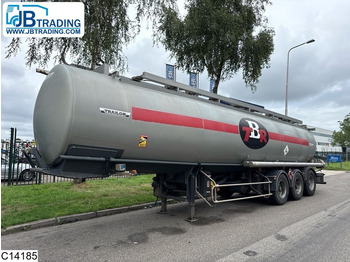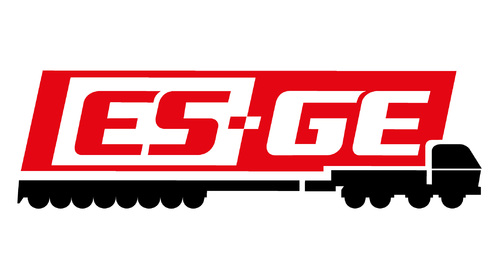Distribution transport
Curtainsider semi-trailers
1606Refrigerator semi-trailers
1172Closed box semi-trailers
575Isothermal semi-trailers
328Dropside/ Flatbed semi-trailers
686Tank semi-trailers
721Silo semi-trailers
93Chassis semi-trailers
32Container transporters/ Swap body semi-trailers
715Walking floor semi-trailers
222Belt semi-trailers
2Autotransporter semi-trailers
120Timber semi-trailers
105Beverage semi-trailers
5Livestock semi-trailers
31Horse semi-trailers
1Construction machinery









A semi-trailer is a trailer whose front part rests on a tractor unit towing it via a fifth wheel coupling. This trailer only has wheels at the back and no front axle available. A road tractor coupled to a semi-trailer is often called a semi-trailer truck, “semi”, an 18-wheeler, a truck, a big rig, a tractor-trailer, or a semi-tractor truck in North America and Australia, and an articulated lorry in the United Kingdom.
A prime mover with two semi-trailers is called a B-double or double. And when there are two or more trailers, the construction is called “a road train”.
A distinctive feature of the semi is that the tractor unit can detach from the trailer. When unhitched, the semi-trailer rests on the ground on two legs (landing gear) which can be operated hydraulically or manually.
The bodies of the semi-trailers are the same as those of the trucks: tank for liquid products, tipper for non-volatile bulk products, refrigerator for perishable goods, etc. From small-good deliveries to commercial construction, they come in a range of shapes, sizes, and functions to fit specific applications.
Find the Semi-Trailer for Your Needs at Truck1’s Classified Ad Platform
Are you looking for a semi-trailer to tackle your jobs? Whether moving furniture, food and beverage, sporting equipment, or more, investing in the right semi-trailer will save you a lot of time and frustration. Regardless of the trailer you choose, they are all designed to ensure you have a winning edge in your transport operation.
Please take a look at Truck1’s stock of new and used semi-trailers for sale and fill out the contact form or call the seller directly to finalize the deal.
Frequently Asked Questions
Why are semi-trailers important in Europe's logistic industry?
Semi-trailers play a crucial role in Europe's logistics industry due to their high utility in bulk transportation of goods. They facilitate the swift and efficient movement of products from one location to another, thus enhancing trade within and outside the region. Additionally, the use of semi-trailers helps reduce the cost per unit of freight, contributing to the overall profitability of businesses in the logistics industry.
How much does a new semi-trailer cost in Europe?
The cost of a new semi-trailer in Europe can vary significantly due to factors such as the make, model, features, and the trailer's size. On average, buyers can expect to pay anywhere from €30,000 to €80,000 for a new semi-trailer. Custom-built trailers or those equipped with advanced features may cost higher. It's recommended to get a quotation from several dealers to obtain the best price.
How are European regulations impacting the design and operation of semi-trailers?
European regulations significantly impact the design and operation of semi-trailers. The EU has strict standards concerning weight limits, emission standards, and safety features, which manufacturers must follow when designing and producing semi-trailers. These regulations can also influence the operation as drivers and companies must comply with requirements for loading, vehicle maintenance, and operation to ensure safety and minimize environmental impact.
Why is the demand for eco-friendly semi-trailers increasing in Europe?
The demand for eco-friendly semi-trailers is increasing in Europe due to growing environmental concerns and stricter emission regulations established by the EU. As part of the global move towards sustainability, eco-friendly semi-trailers designed to decrease fuel consumption and lower CO2 emissions are becoming more prevalent. Additionally, the use of such trailers can lead to cost savings in terms of fuel and potential tax benefits, contributing to their growing demand.


